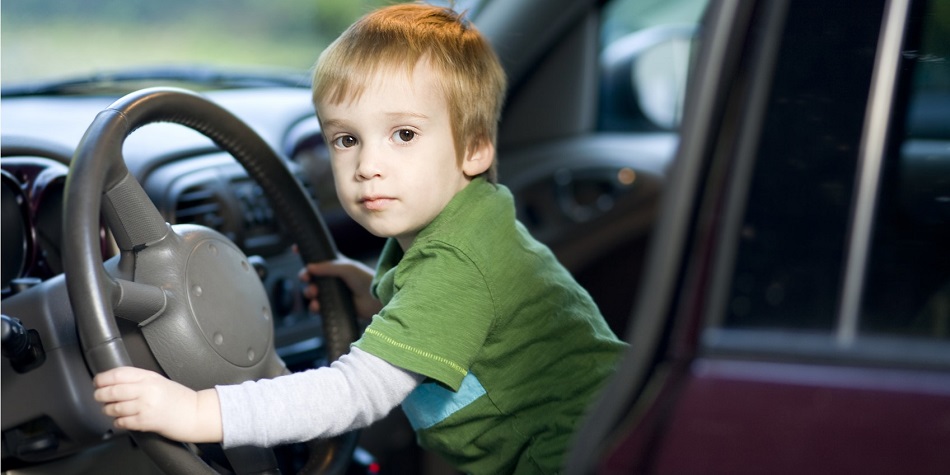
Every summer, it seems we hear stories about children dying after being left in hot cars. Upon reading these stories, many parents have a similar reaction – how could anyone forget their child in that way? Unfortunately, the death of a child due to vehicular heatstroke happens to even the most responsible caregivers – during any time of the year.
According to data compiled by an initiative from the Department of Meteorology and Climate Science at San Jose State University, an average of 37 children die from vehicular heatstroke annually. More than half are under 2 years old. It’s the leading cause of non-crash related vehicular deaths in kids 14 and under.
At some point, every driver becomes distracted and stressed. Instead of thinking that this could never happen to your family, take a moment to consider how children can be left in vehicles and how to prevent it.
Ways kids get trapped in cars
Over half of vehicular heatstroke cases occur when a parent or caregiver forgets that a child is in the car. These cases – which are labeled as unintentional – happen when routines are changed, a driver is distracted or a different caregiver is in charge of a drop-off. Once they reach their destination and park the car, these drivers can leave without realizing anyone is still in the vehicle.
According to the National Highway Traffic Safety Administration (NHTSA), nearly 3 in 10 heatstroke deaths in children occur when they gain access to a parked, unlocked vehicle. Kids may climb in the car to play or retrieve something but may not be able to get themselves out of the car.
Finally, many parents and caregivers are simply misinformed about the danger of leaving a child in a vehicle. Cars can heat up very quickly, even when outside temperatures are in the high 50s or low 60s. A car’s internal temperature can increase by 20 degrees in just 10 minutes and cracking windows or running the air conditioner while the engine is turned off is not enough to cool it down.
Youngsters should never be left unattended, even for trips that you think could take a minute. A short errand can always become delayed, causing them to be unattended longer than anticipated.
How heat affects young kids
While extreme heat can be dangerous for people of any age, younger children tend to have a higher risk for heatstroke. Their bodies tend to absorb heat quicker, and they don’t sweat at the same rate as adults, making them unable to cool their skin as rapidly. Their metabolisms also function more quickly than those of adults, producing more body heat.
Once a child’s internal body temperature reaches 104 degrees Fahrenheit, organs begin to fail. At 107 degrees, they could die. If left in a hot car, it does not take long for their body to reach these extreme temperatures.
If your child has been trapped in a hot vehicle, look for warning signs of heat illness, including hot skin, feeling faint, nausea, vomiting, fever, intense thirst, not urinating, headache, confusion and muscle spasms and cramps. If you observe any of these symptoms, call your pediatrician immediately.
Steps to prevent vehicular heatstroke
There are precautions any parent or caregiver can take to assure that this type of tragedy does not happen to their family.
Always lock your car at home
Once you’re inside your home, keep your keys in a secure location that children cannot reach. This prevents kids from finding their way into a parked car to play, accidentally trapping themselves inside. Let them know that cars should not be used for games.
Take your child out of the car at every stop
Even if you plan to dash in and out of a store, unbuckle your kid and carry them in with you. Even a minute in a car alone could be deadly.
Be alert when leaving your vehicle
End all phone conversations before you step out of your car. Make it a habit of looking into your windows instead of rushing off to work. The stress of starting the day can make us forgetful, so practice a routine that allows you to be mindful of your surroundings and responsibilities.
Keep your belongings in the backseat
Whether it’s your bag, a cell phone or even a shoe, keep an essential item that you wouldn’t leave without. If your car has remote start, consider putting the key in the backseat, too. The NHTSA suggests placing a stuffed animal in the front seat when your child is in the back as a reminder.
Use technology and motion sensors
Some new car models and car seats now come equipped with technology that alerts parents when a child is left in a vehicle. Other cars may also have alarms that will go off if any motion is detected around or inside the automobile. Technology is not foolproof though, and a sleeping kid often doesn’t set off an alarm.
Have your daycare or caregiver call if your child is late
This may trigger a reminder if your child is left in a perilous situation. If you are tasked with dropping off your child when it’s not normally part of your routine, have a spouse, parent or friend text you that morning to make sure everything went according to plan. If someone else is taking your kid to school, check in with them.
Finally, take action if you see a child in a car. Call 911 if you suspect a child may be in danger and wait until help arrives. Many people don’t want to meddle, but quick action could be the key to saving a child’s life.
$webqFacilityNumber
Need a Physician?